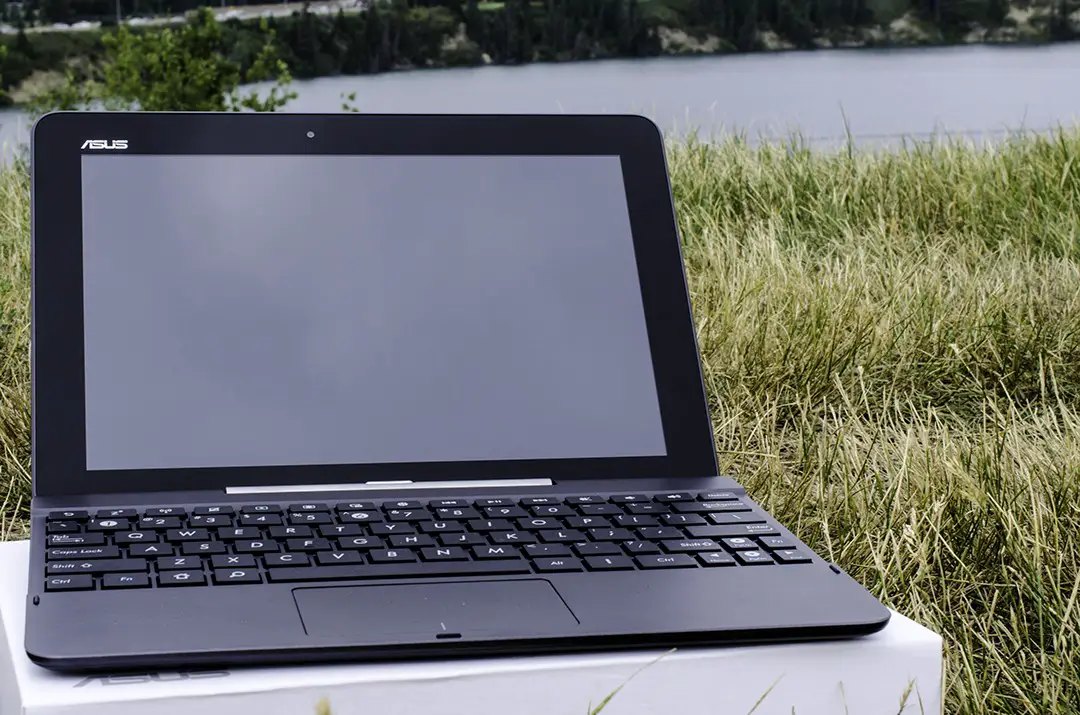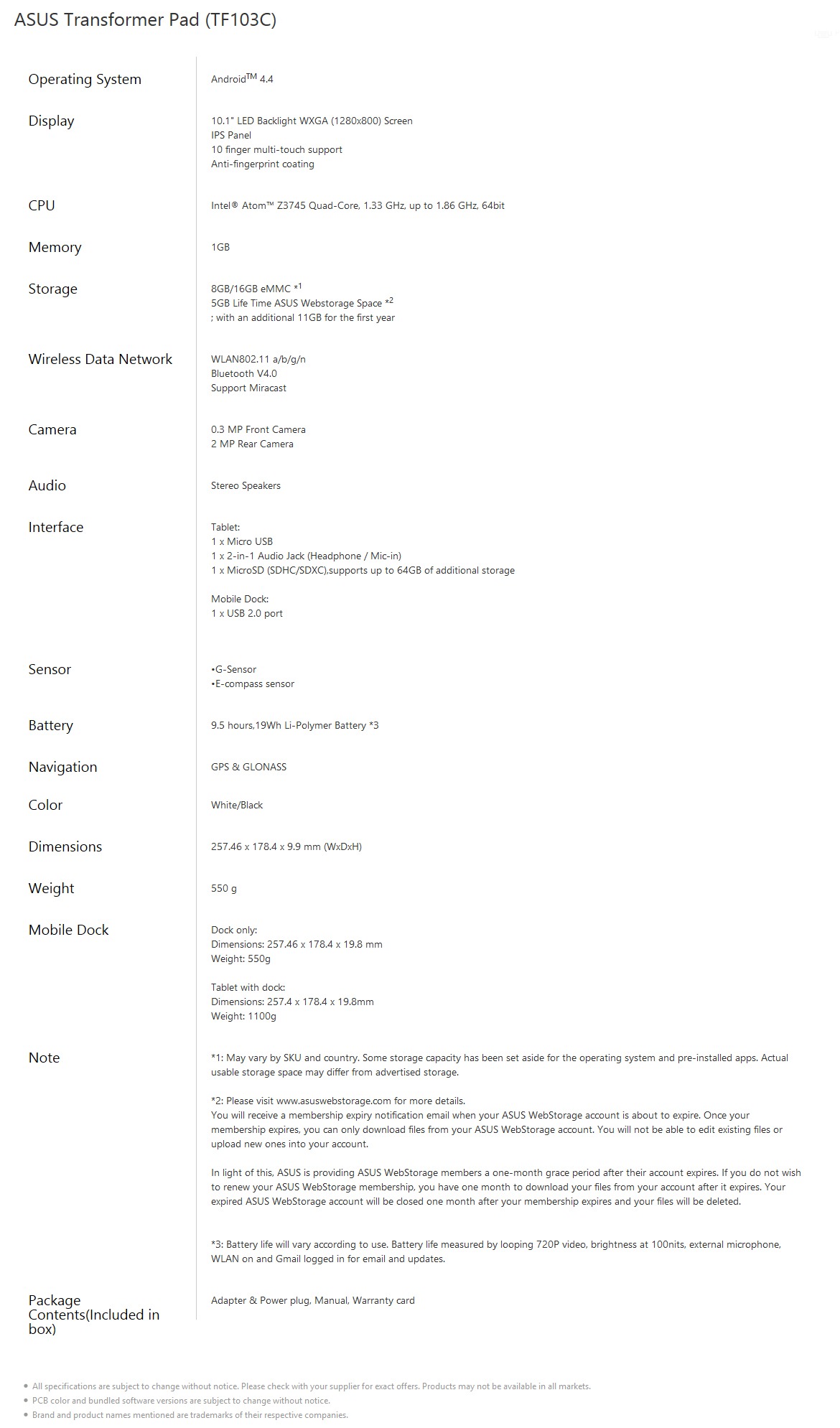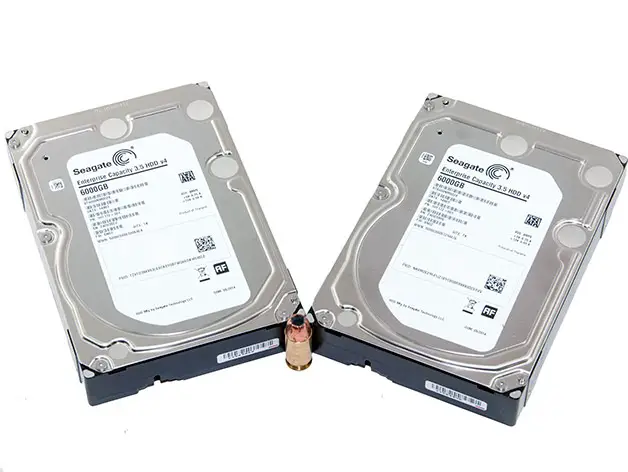TF103C – Introduction
 Brand: Asus
Brand: Asus
Model: TF103C
Price: $249-$549
Warranty: 1 Year Global
In a extremely tablet filled market, where every name brand and knock off is selling their tablets as revolutionary or the best of the best. Asus on the other hand covers all their bases from Windows 8 tablets to their always good crossover Android tablets with the Transformer line. Now bring in the TF103C is it the faster, highest resolution and ultra highest end? Not at all but it does check all the boxes with a awesome price to performance, great keyboard and almost all day battery.
Asus has always been the front runner in the Android market, ever since their first transformer book they have married the keyboard, trackpad and touch screen better than any other. They have never lost sight of their roots in that way, only improved upon it. Today many Asus tablets are even seen in offices and schools. People wear their Asus logos with pride and it is rare to meet any who have anything horrible to say about them.
Without further delay lets dive right in.
TF103C – Specs
TF103C – Closer Look Unboxing
Asus has kept the packaging for the TF103C to absolute bare essentials. A picture of the tablet adorns the front of the box and the tablets specifications are found on the back.
Upon opening the box we are greeted with the top of the TF103C tablet, nestled in the MobileDock. Below the tablet we find the tablet and MobileDock manuals and warranty guides in both French and English, micro USB cable, and AC adapter. Below that we find, well, nothing. Warranty lasts 1 year, covered by Asus’ standard warranty.
The included AC adapter is Asus’ PSM06A-05Q, which they have included alongside other a few other tablets such as the Nexus 7. It is rated to output 5.2V at 1.35A and manages to keep pretty cool during long charging sessions.
TF103C – MobileDock
Asus’ MobileDock is the first half of this tablet package we’ll look at. The version included with our review unit is DOCK-EC40C-0304. The dock is a keyboard, trackpad, and full-sized USB 2.0 port housed inside a very thin package. Although thin, the dock feels solid has little to no flex while typing on it. The layout is above average, featuring full sized backspace, enter, and left shift keys. The keys have a bit better travel than you’d expect from a tablet keyboard and probably wouldn’t bother anybody around you with their sound. The trackpad is quite sensitive, which is most likely purposely done due to the limited size of it. You will definitely want to turn it off while typing or else you’ll want to rip your hair out. Otherwise, the trackpad does a good job of telling when you’re looking to move the cursor or just to click.
The docking connector is something I touched on in my previous review of the Transformer Pad T100. Asus has included two metal mounting tabs on either side of the dock connector itself. This achieves an extremely solid connection between the tablet and the dock, making it virtually impossible to have the dock separate from the tablet during use. As a little added touch, there is a strip of fabric where the tablet comes into contact with dock that should mean no scratches from docking and undocking.

The underside of the dock is practically bare, only having 4 rubber feet and a 6 visible torx screws to interrupt the otherwise solid dark gray.
TF103C – Closer Look at Features
The Transformer Pad TF103C boasts an Intel BayTrail Atom Z7345 quad core processor running at 1.33Ghz, with boosted clocks of 1.86Ghz a possibility, and 1GB of RAM. There are 8 and 16GB variants, with the system taking up 4.87GB of that. With a microSD slot supporting up to 64GB of extra storage, as well as 5GB of lifetime Asus Webstorage space, storage concerns should be non-existent.
Asus housed the tablet in a sleek black casing with brushed dark gray accents along the edge of the tablet. Asus advertises that the frame now includes zinc, which is shown by the rigidity of the tablet. It is also available in white if you so prefer. On the back of the tablet we see the centered 2MP rear camera, with the dual speakers along either side. Along the top is the power button and microphone. The right side features a lonely 3.5mm audio jack, handling either headphones or mic-in duty. The left side is the most busy, containing the volume buttons, microSD slot, and micro USB port for charging and data transfer. As I touched on in the dock section of the review, the bottom of the tablet had the cutouts for the two mounting tabs alongside the dock connector.
The tablet houses a stunning 10.1 inch IPS panel at a resolution of 1280×800. Colours and viewing angle are fantastic and even so at lower a brightness.
Sadly I can’t say anything positive after that bit. Asus advertises an anti-fingerprint coating, to which I ask, really? I cleaned the tablets screen and washed my hands before playing around with it. Within two hours the screen looked like a toddler got a hold of it and smeared their nasty hands around it. This is true even for the matte black backing, and to a lesser extent, the dock.
The other downside is something that plagued the T100 I reviewed. The amazing colour comes at the cost of a highly glossy screen. Indoors is fine for the most part, but if sunlight is hitting the screen you basically can’t see a thing without jacking up the brightness to 100%.
TF103C – Pre-installed Software
As of the latest update, Asus has KitKat version 4.4.2 powering the TF103C. Running on top of that is what Asus calls the ZenUI. It adds quite a bit of features to simplify how you keep track of everything going on in your life and the world around you. We will delve deeper into that in this section.
After going through initial setup, this is the first screen you are greeted with. We see elements of the ZenUI front and center on your home page, giving you weather, time, and alarm information.
Pulling down in the center of the notification bar give you Asus’ quick settings menu. You have access to add and remove buttons from this tab as you please. The Audio Wizard and Reading Mode are additions that I quite enjoyed. The audio wizard is basically a quick EQ changer, letting you pick between power saving, music, movie, recording, gaming, and speech modes. It’s not a huge difference between everything but it is noticeable. Reading mode adjusts the contrast and warms the colour of the screen to make text easier to read. I used it a lot while typing this article and it does make a difference, especially in low light.
The apps drawer is basically free of added junk aside from Asus’ apps meant to be used with ZenUI and the Amazon Kindle app. The included apps from Asus cannot be uninstalled, but they can be disabled as desired. The Asus apps by default are all grouped into a drawer on the home page. They’re self explanatory for the most part, with the exception of SuperNote and Splendid. Supernote is meant for taking notes quickly by hand. In turn, the app turns those drawings into separate images allowing you to delete and rearrange things as you please. Splendid lets you take control of your displays colours. You can adjust temperature, hue, and saturation to your liking.
TF103C – Performance test
One of the main worries with ever increasing power is battery life. Asus advertises 9.5 hours of battery life with three 19Wh LiPo batteries. At 50% brightness I managed to get to 44% battery life in just over 4 hours of Netflix streaming. I don’t think you’ll squeeze 9.5 hours of straight video streaming, but it should definitely be possible with some light browsing thrown into the mix.
On the subject of video, you should have absolutely no worries with any media you want to play. Both local and streamed 1080p video played without a hitch. Gaming follows suite with games playing smoothly even during some of the more hectic situations.
Using AnTuTu Benchmark as a reference, the TF103C (Shown as ” My K010″) comes up nipping on the heels of some of the newest super phones in terms of performance. You can see in the details page that the CPU did increase its clocks to the max speed while being stressed.
TF103C – Conclusion
Asus has once again shown their ability to pack features and quality into a tablet costing well under the competition. For around $350 you receive a powerful and well built tablet, along with an equally well made dock. It chews through anything we could throw at it and manages to keep a respectable battery life throughout. With dual speakers and plenty of storage options you have a great media station to keep occupied with.The major downfall is definitely the screen and its desire to reflect anything and everything it’s pointed at.
If you need the features of a laptop but the portability of a tablet, the TF103C definitely fills that role. From typing up documents on plane rides to late night surfing, this does it all.
For being an almost all day tablet with great features, great price, that uses very little power in both use and charging. We award the Asus TF103C the Power Saver Award. Asus almost earned an Excellence Award but the super glossy finger print magnet screen loses it a few points, dropping it out of the running for Excellence but it is nonetheless a great tablet crossover.







































